|
|
|
![]() back to "The Grand Tour" index
back to "The Grand Tour" index
Neville Malkin's "Grand Tour" of the Potteries
buildings of Hanley
![]()
![]()

next: The Mineworkers Union
Building, Hanley
previous: The Staffordshire
Potteries Water Board, Hanley
contents: index of buildings in Hanley
|
No 76 - The Bethesda School Rooms, Hanley Former Methodist School. 1819, enlarged 1836. Flemish bond brickwork with plain tiled roof. 2-storeyed, 12 bays fronting church yard, the central section advanced with pedimented gable with giant pilasters and octagonal lantern over. Pilasters also mark angles. Windows are sashes with margin lights and flat arched stuccoed heads with expressed keystones. Upper windows of central section have entablatures carried on console brackets. Pedimented stuccoed gable to street with blind central doorway with entablature and flanking sash windows with margin lights. Central upper window with entablature, also blind. Inscribed in the pediment is "Bethesda School. Erected MDCCCXIX enlarged MDCCCXXXVI". Alexander House forms the south wing added to the rear beyond the former pedimented central gable, matching that to the north. Round arched doorway with margin lights below and tripartite upper windows. Cast-iron railings with domed caps to
Bethesda Street.
|

The Bethesda School Rooms,
Hanley
pen drawing by Neville Malkin - July 1976
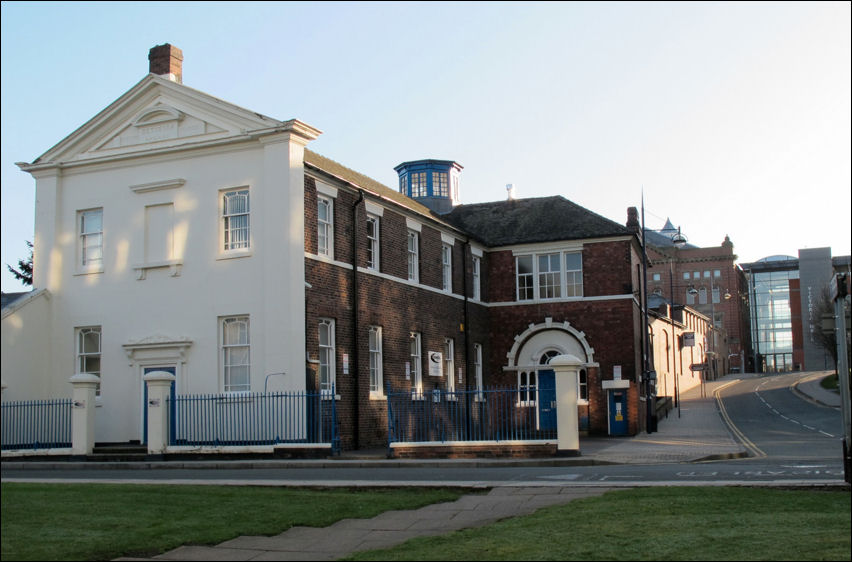
the former Bethesda Chapel
School Rooms in Bethesda Street, Hanley
behind and to the right can be seen the Victoria
Hall
photo: April 2010
|
|
|
"Behind the Bethesda Chapel and its spacious cemetery are the Bethesda Schoolrooms, built in the classical style in 1819 and enlarged in 1836. The main block has a rendered front and is 150ft. in length, with a one-roomed basement and an ornamental lantern, or glazed cupola, on the roof.
The Sunday School provided for more than 1,000 children, who were taught to read and write, and also instructed in religious and general knowledge. There was an extensive library of about 1,700 volumes, designated "The Bethesda General and Juvenile Libraries." It had a large number of subscribers as well as the teachers and scholars, who were entitled to special privileges. Free education in Hanley and Shelton about 1840 was a luxury, something that was available mainly on Sundays or during the evenings, in rooms adjoining the numerous places of worship. Beside the Bethesda School, the New Methodists had four other chapels and schools.
Free day schools did exist for the minority. There was the National School (1815) in Lichfield Street which had 300 day scholars, and a Sunday School of 500 run in conjunction with Hanley Church; attached to St. Mark's, Shelton, a similar school had 150 day and 500 Sunday scholars. The British School (1818) in Pall Mall appears to have been the only non-denominational school, and although it could accommodate 500 scholars, it only managed a daily average of 230." |
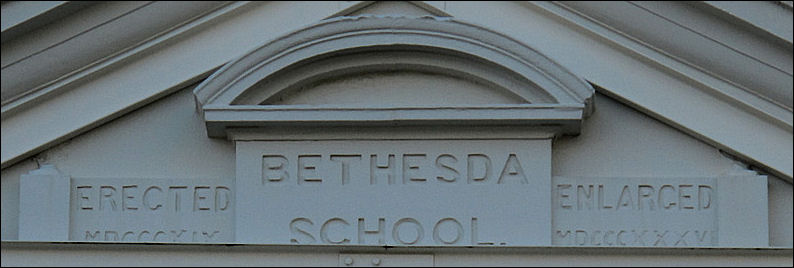
"Bethesda School. Erected
MDCCCXIX enlarged MDCCCXXXVI"
1819 enlarged 1836
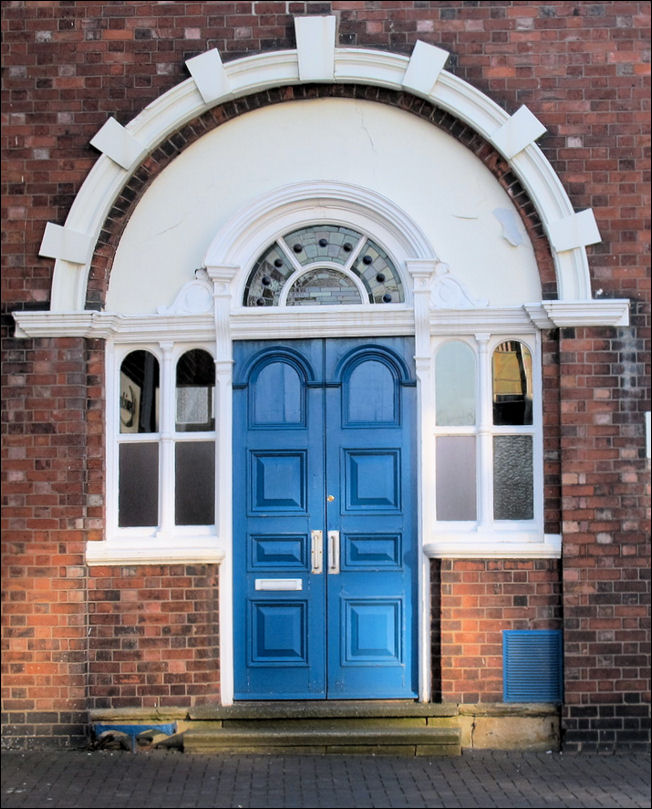
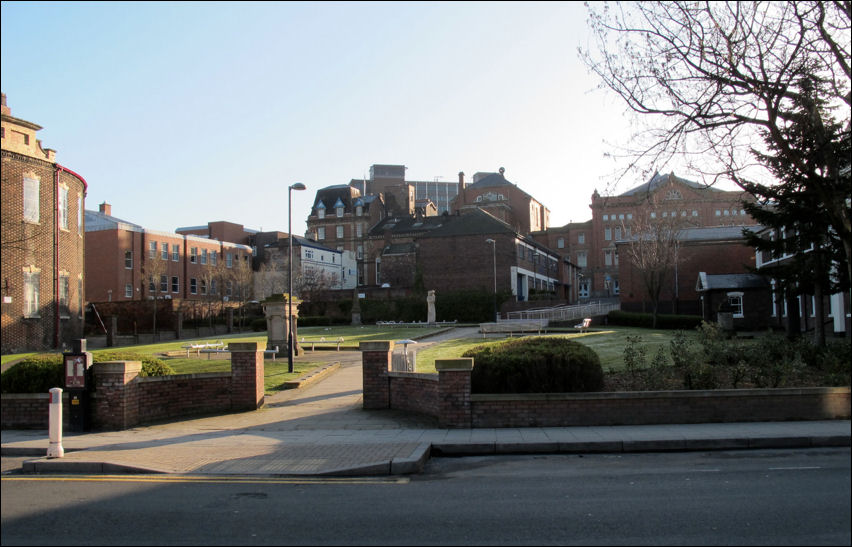
the former burial grounds
belonging to the Bethesda Chapel
to the left is the rear of the Bethesda
Chapel and to the right is the School Rooms
in the background is Hanley Town Hall and the Victoria Hall
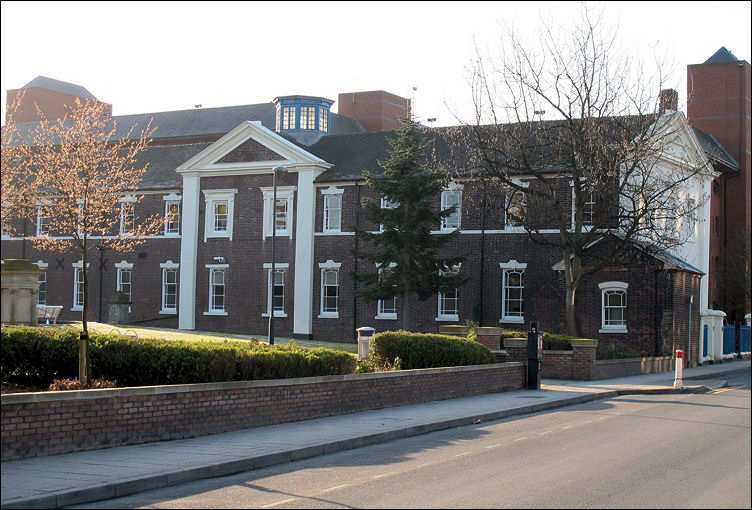
![]()
![]()

next: The Mineworkers Union
Building, Hanley
previous: The Staffordshire
Potteries Water Board, Hanley
contents: index of buildings in Hanley
back to "The Grand Tour" index